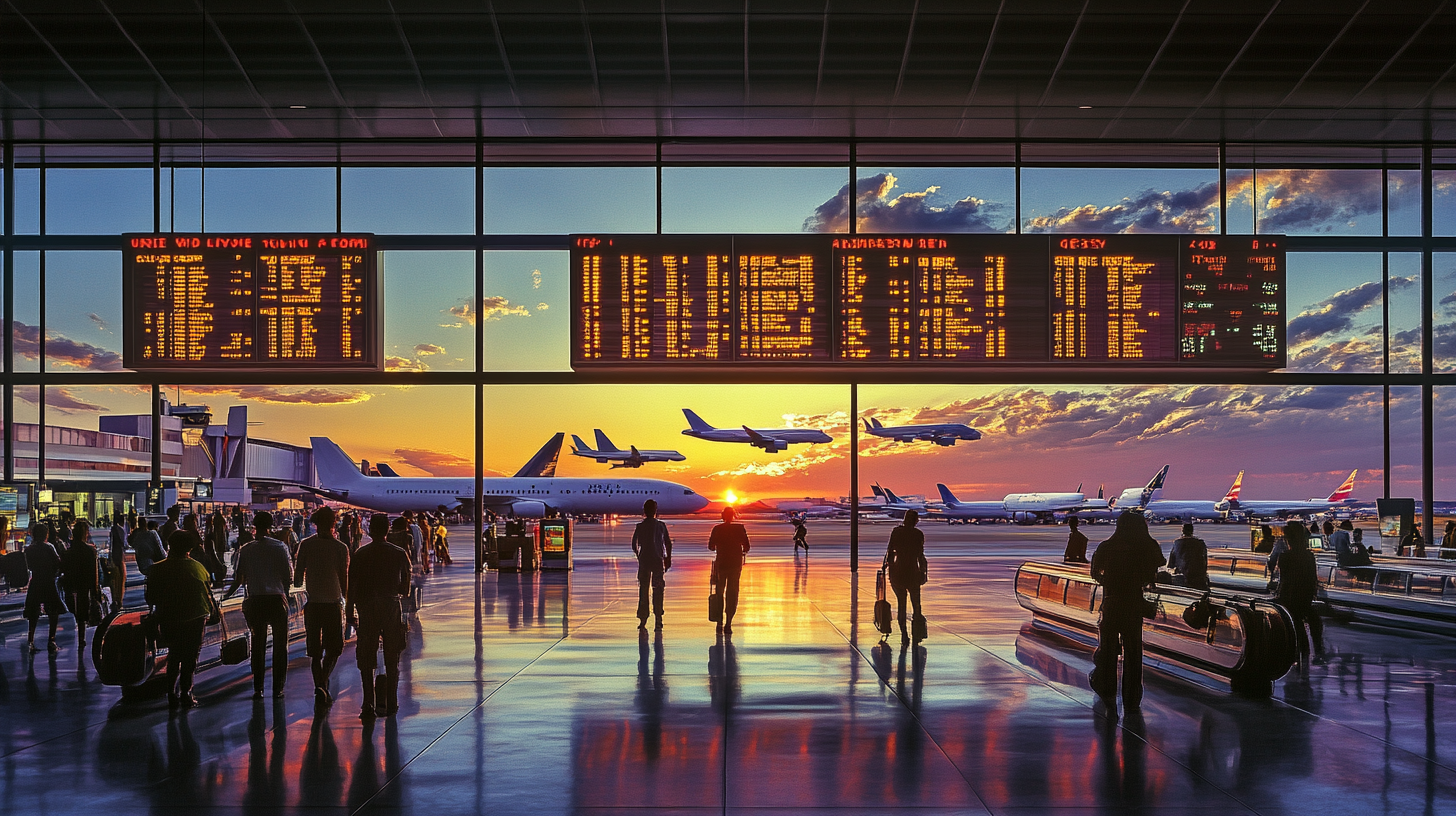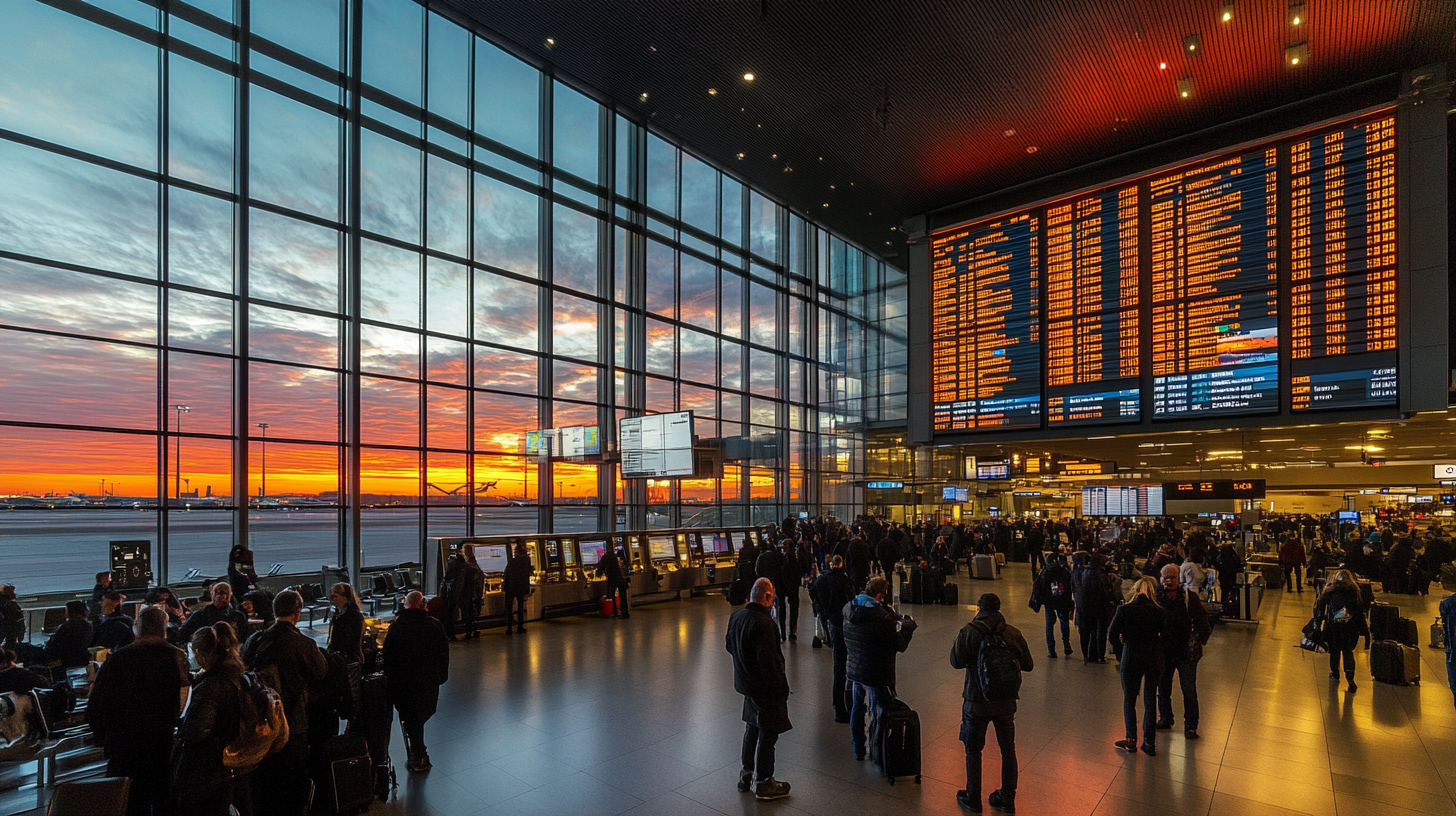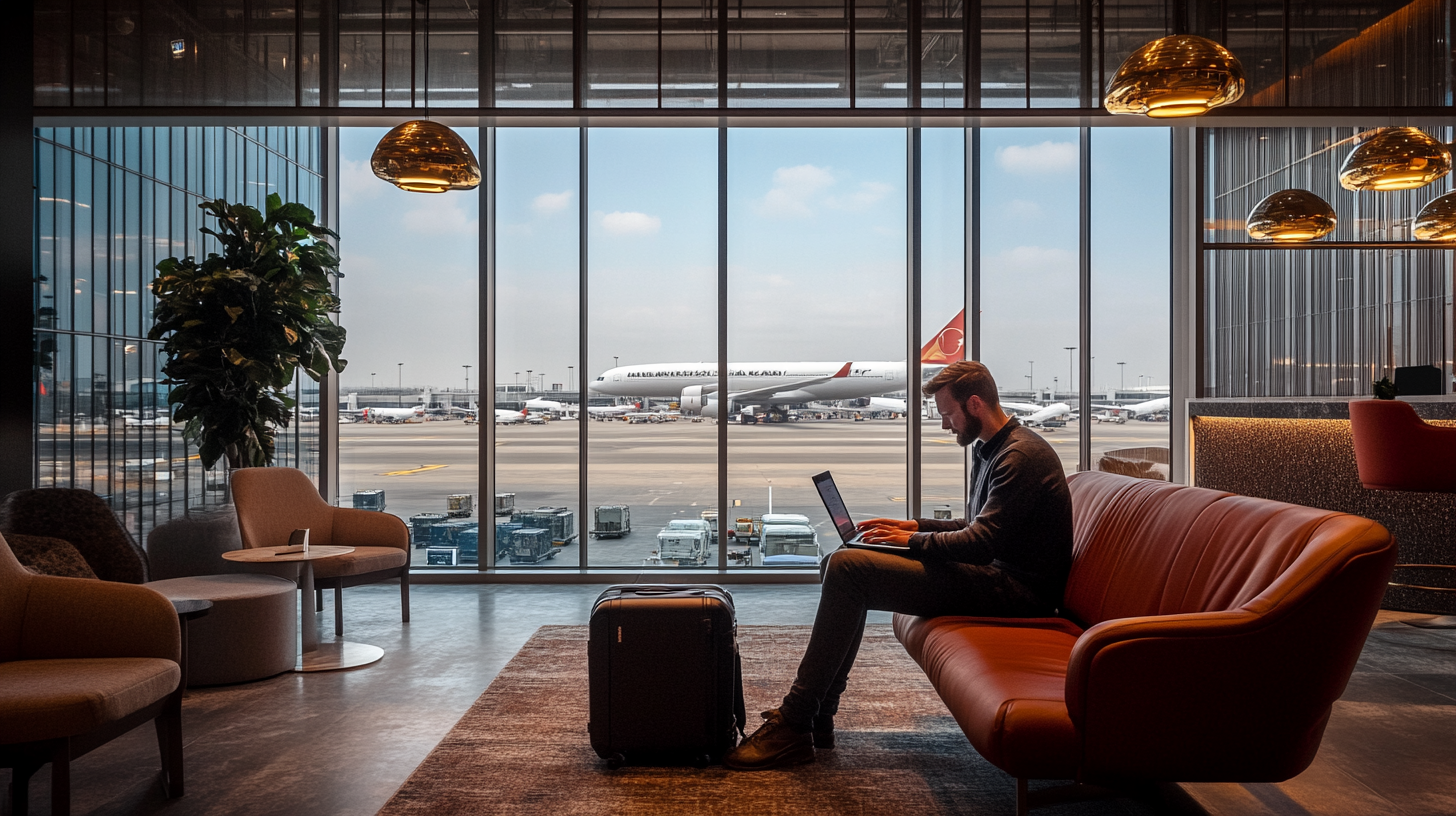How Far in Advance Should I Book a Flight?

Securing the best airfare can often feel like navigating a complex maze, with fluctuating prices and a plethora of conflicting advice on the ideal time to book. Travelers frequently wonder whether they should secure flights months ahead or wait for last-minute deals. Understanding the optimal time to book flights not only leads to significant savings but also contributes to a stress-free travel planning experience. This comprehensive guide delves into proven strategies for booking flights in advance, equipping you with the knowledge to make informed decisions and helping you navigate the skies without breaking the bank. By mastering the art of timing, you can turn the often overwhelming process of flight booking into a straightforward and rewarding endeavor.
The Sweet Spot for Booking Flights

Domestic Flights

For domestic travel, timing truly is everything. Experts suggest that the ideal window for booking domestic flights lies between three weeks to three months before your departure date. For instance, a traveler planning a trip from New York to Los Angeles might find that purchasing tickets 60 days in advance yields significantly lower fares than booking earlier or later. A study by CheapAir.com supports this, noting that the lowest prices are typically secured when booking between 21 to 75 days in advance. Booking too early, say six months ahead, may not offer the best deals, as airlines have not yet begun to adjust fares in response to demand. Conversely, booking too late can result in inflated prices, as airlines capitalize on last-minute travelers’ urgency. Understanding this “sweet spot” is essential for travelers aiming to optimize their travel budget and avoid unnecessary expenses. For more detailed strategies, consider consulting Optimal Timing Strategies for Domestic Flight Booking .
International Flights

When it comes to international travel, patience and foresight pay off significantly. The optimal booking window extends further than for domestic flights, with experts recommending that travelers book international flights two to eight months in advance. For example, if planning a trip from the United States to Europe during the summer months, booking well in advance can mean the difference between an affordable vacation and an exorbitant expenditure. For peak travel periods, such as summer vacations or major holidays, it’s prudent to secure tickets even earlier—up to six months ahead—to lock in the best deals before prices escalate due to increased demand. Early planning not only ensures better pricing but also provides more options in terms of flight times and seat selections. Travelers interested in understanding the nuances of international fare trends might find valuable insights in Comprehensive Guide to Booking International Flights Early . By investing time in early research and booking, you can avoid the stress and financial strain of last-minute arrangements.
Factors Influencing Flight Prices

Understanding the factors that influence airfare can empower travelers to make smarter booking decisions. Several key elements affect flight prices:
- Seasonality: Peak travel seasons like summer, Christmas, and other major holidays typically see higher prices due to increased demand. For instance, flights to popular beach destinations during spring break can be significantly more expensive.
- Special Events: Major events, conferences, or festivals can drive up prices as more travelers head to specific destinations. An example is the surge in airfare to cities hosting events like the Olympics or international expos.
- Demand Fluctuations: Airlines adjust prices dynamically based on how quickly seats are filling up for a particular flight. If a route is selling out faster than expected, prices may increase to maximize revenue.
- Fuel Costs: Fluctuations in global fuel prices can impact the cost of airfare, as airlines adjust their prices to offset operational expenses.
- Competition: The number of airlines operating on a route influences pricing. Increased competition can lead to lower fares, while routes monopolized by a single carrier may maintain higher prices.
- Advance Purchase Requirements: Some airlines offer special fares that require tickets to be purchased a certain number of days in advance, rewarding early planners with lower prices.
By being aware of these factors, travelers can better anticipate price changes and plan their bookings accordingly. For a deeper dive into how these elements interact, Understanding Airfare Pricing Dynamics provides an in-depth analysis.
Booking Early for Savings

One of the most effective strategies for securing low fares is to book early. Airlines typically open their booking windows well in advance, ranging from six months to nearly a year before the departure date. For U.S. carriers, this window generally opens from 6 to 11 months before takeoff. By booking as soon as flights become available, travelers can access the lowest fare classes, which are often limited in number. For example, an early bird planning a trip to Asia might find significantly lower prices and better seat availability by booking when the airline first releases tickets. Additionally, early booking can be particularly advantageous for popular routes and during peak travel seasons when demand is high. It’s important to note that airlines release seats in fare “buckets,” starting with the least expensive ones. As these seats are purchased, prices incrementally increase. Seizing the opportunity to book early allows travelers to secure these lower-priced seats before they’re gone. For more on how early booking affects pricing, consider reading The Benefits of Early Flight Booking .
Utilize Price-Tracking Tools

In today’s digital age, travelers have access to a plethora of tools designed to simplify the flight booking process. Platforms like Google Flights, Kayak, and Skyscanner offer robust price-tracking features that alert users when fares drop for their desired itineraries. By setting up these alerts, travelers can stay informed about price fluctuations and capitalize on the lowest rates. For instance, a traveler planning a trip to Tokyo might set up alerts several months in advance and receive notifications when prices dip, allowing for timely booking. It’s important to note that flight prices can be highly volatile, sometimes changing multiple times within a single day due to various factors such as demand and seat availability. Utilizing these tools takes the guesswork out of timing your purchase and ensures you don’t miss out on potential savings. For a comprehensive list of helpful booking tools, refer to Top Flight Tracking Tools for Budget Travelers .
Flexibility Is Key

Being flexible with your travel dates and times can lead to significant savings. Consider the following tips:
Travel Midweek

Being flexible with travel dates is one of the best ways to find lower airfares. Flights departing on Tuesdays, Wednesdays, or Saturdays are often cheaper compared to peak days like Fridays and Sundays when business travelers and weekend vacationers drive up demand. For example, shifting a departure from a Friday to a Wednesday could result in substantial savings. These midweek days are considered off-peak, so airlines reduce prices to fill seats. Additionally, airports are generally less crowded on these days, potentially leading to a more pleasant travel experience. Taking advantage of midweek flights not only saves money but can also make the journey itself less stressful. For tips on finding the cheapest days to fly, see Flying on the Cheapest Days: How to Maximize Savings .
Unorthodox Flight Times

Considering flights at less conventional times can also yield significant savings. Early morning departures, often dubbed “red-eye flights,” or late-night flights are typically less expensive due to lower demand. For travelers who are flexible and don’t mind adjusting their sleep schedule, these flights offer an opportunity to reduce costs. For instance, a flight departing at 6 a.m. might be considerably cheaper than one leaving at midday. Additionally, airports tend to be less crowded during these times, potentially leading to shorter security lines and a smoother check-in process. Embracing these unorthodox flight times can be a strategic way to stretch your travel budget further. For more insights on the benefits of off-peak flight times, refer to The Advantages of Flying During Off-Peak Hours .
Avoid Peak Travel Days

Airfare tends to skyrocket during peak travel periods, such as major holidays, school vacation weeks, and popular seasonal times like summer and winter breaks. If your schedule allows, planning trips during off-peak seasons can lead to substantial savings. For instance, traveling to Europe in the fall or spring, rather than the peak summer months, can result in lower airfares and fewer crowds at tourist attractions. Similarly, flying on the actual day of a holiday, like Thanksgiving or Christmas Day, can sometimes offer lower prices compared to the days leading up to or following the holiday. By avoiding peak travel days, travelers can benefit from both reduced costs and a more relaxed travel experience. For strategies on timing your travel to avoid peak costs, see Planning Travel During Off-Peak Seasons for Maximum Savings .
Using Points and Miles

For frequent travelers, accumulating points and miles through airline loyalty programs or credit card rewards can significantly reduce travel expenses. Leveraging these rewards requires strategic planning. Booking flights using points or miles well in advance is crucial, as award seat availability is often limited and can be claimed quickly by other travelers. For example, desirable flights during holidays or peak seasons may have limited award seats that are booked months ahead. Additionally, some programs may increase the number of points or miles required for a flight as the departure date approaches due to dynamic pricing models. Therefore, early redemption of rewards ensures better availability and value for your points or miles. For those new to reward travel, Mastering Airline Loyalty Programs provides essential tips for maximizing benefits.
Pay Attention to Award Availability

Award seat availability is a critical consideration for those planning to use points or miles. Airlines typically release a limited number of award seats when their booking window opens, which can be up to a year in advance. On popular routes or during high-demand periods, these seats are claimed swiftly. For example, travelers aiming for a summer trip to a popular destination like Hawaii may find that award seats are booked almost immediately after they become available. To improve the chances of securing an award seat, it’s advisable to mark the date when the airline’s booking window opens and be prepared to book as soon as possible. Monitoring airline websites or subscribing to notifications about award seat releases can provide an edge. For a detailed explanation of award seat strategies, consider reading Securing Award Seats: A Guide for Frequent Flyers .
Monitoring and Adjusting Bookings

Flight prices are dynamic and can change frequently. To navigate this, consider the following strategies:
24-Hour Cancellation Policy

Given the fluctuating nature of airfare pricing, taking advantage of airline policies can be beneficial. Under the U.S. Department of Transportation regulations, most airlines are required to offer a 24-hour cancellation window for flights booked at least seven days before departure. This means travelers can book a flight and, within 24 hours, cancel it for a full refund if they find a better deal or if their plans change. For example, if you spot a fare that seems reasonable but are unsure, you can secure it, continue shopping around, and cancel within the window if necessary. This policy provides a safety net, reducing the risk associated with impulse bookings. However, it’s important to verify the specific airline’s policy, as some may have variations. For more on understanding cancellation policies, refer to Navigating Airline Cancellation Policies for Smart Booking .
Flexible Fare Options

In the pursuit of low fares, travelers often consider basic economy tickets due to their lower upfront cost. However, these fares come with significant restrictions, including lack of seat selection, no changes, and sometimes even limits on carry-on luggage. If there’s any chance your travel plans might change, investing a bit more in a standard economy fare can be worthwhile. Standard economy typically allows for changes or cancellations, sometimes for a fee, providing greater flexibility. For example, if an unforeseen event requires you to adjust your travel dates, having a flexible ticket can save you from losing the entire fare. Evaluating the terms and conditions associated with different fare classes can prevent unexpected expenses down the line. For guidance on choosing the right fare type, see Comparing Fare Classes to Find the Best Value .
Tips for Securing the Best Deal

- Start Searching Early: Begin your flight search about 20 to 45 days in advance for domestic trips and at least three months for international travel. Early searches provide a baseline for price trends and alert you to any sudden fare drops or increases.
- Set Up Price Alerts: Use tools like Google Flights or Kayak to receive notifications on fare changes for your desired routes. This proactive approach ensures you won’t miss out on lower fares that may only be available for a short time.
- Be Flexible with Dates and Times: Adjusting your departure and return dates by even one or two days can lead to significantly better prices. Using flexible date search options can reveal cheaper flight combinations.
- Choose Midweek Flights: Flying on Tuesdays, Wednesdays, or Saturdays often results in lower fares due to decreased demand on these days.
- Avoid Booking Last Minute: Procrastinating can be costly. Last-minute bookings are usually more expensive due to higher demand and fewer available seats, and the selection is often limited.
Final Thoughts
Finding the perfect time to book your flight is both an art and a science, involving a delicate balance of early planning, flexibility, and vigilant monitoring of fare trends. By booking within the recommended windows—1 to 3 months in advance for domestic flights and 2 to 6 months for international flights—travelers position themselves to take advantage of optimal pricing. Utilizing price-tracking tools, being open to adjusting travel dates, and understanding the factors influencing airfare all contribute to securing the best deals.
Follow us back to Seat 5A for more travel tips and insights. By implementing the strategies discussed, such as Utilizing Flexible Travel Dates for Savings , travelers can turn the often stressful process of booking flights into a manageable and even enjoyable task. With careful planning, the skies become accessible without straining your budget, allowing you to focus on the excitement of the journey ahead.






